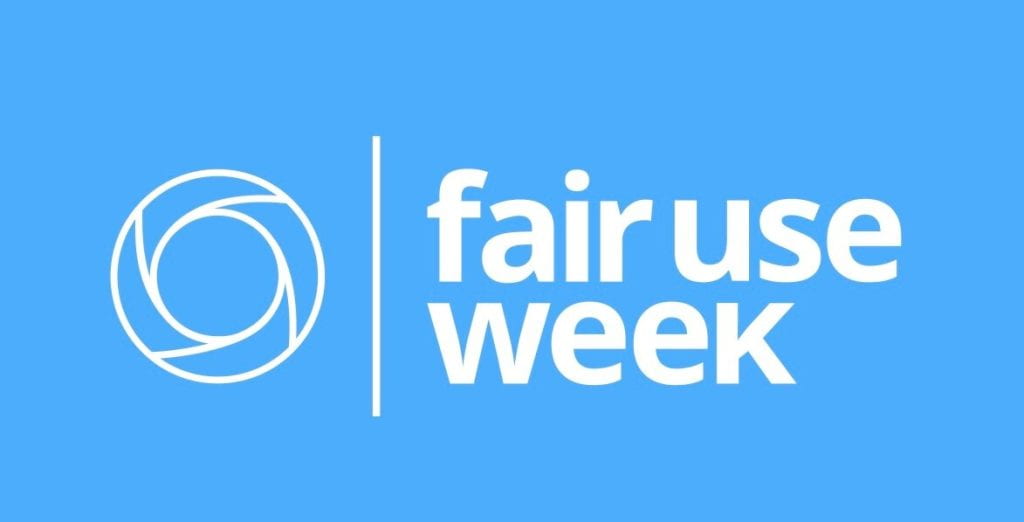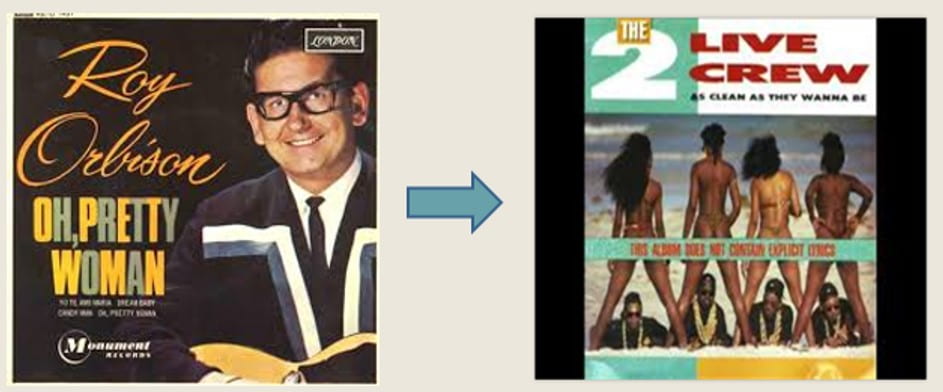
I am delighted to kick off the 11th Anniversary of Fair Use Week with a guest post by expert colleague and long-time friend to Fair Use Week, the international copyright authority Kenneth D. Crews. Join him in an exploration of the thirtieth anniversary of one of the critical U.S. Supreme Court copyright decisions – Campbell v. Acuff-Rose Music, Inc., 510 U.S. 569 (1994) a.k.a “The 2 Live Crew Case.” – Kyle K. Courtney
Music, Fair Use, and the Supreme Court: Celebrating Thirty Years of Copyright and the Oh, Pretty Woman Decision
by Kenneth D. Crews
This is an ideal week to celebrate the legacy of David Souter, who served on the U.S. Supreme Court from 1990 until his retirement in 2009. Justice Souter was seldom exciting, and certainly never glamorous. He was not made for TV. But Souter understood culture, and he knew how to tell a story. That literary wisdom profoundly shaped his analysis of fair use and the classic song, Oh, Pretty Woman.
Next month will bring the thirtieth anniversary of the U.S. Supreme Court’s ruling in Campbell v. Acuff-Rose Music, Inc. On March 7, 1994 the Court issued an opinion that redefined fair use, with a vivid understanding of popular music, human relations, legal parameters, and modern romance. Bringing the case to the Court was Luther Campbell and other members of the rap group “2 Live Crew,” arguing that their song Pretty Woman was a parody of the Roy Orbison standard and should be allowed under fair use.

It may be easy to label the case with words of “pop” and “passion,” but Souter frames the copyright analysis with constitutional doctrine and noble quotations from leading jurists of the early 1800s. This may be a case about rap music from Miami’s Liberty neighborhood, but Souter saw it as a modern example of the “science” that fair use is specifically meant to foster. By citing academic sources to define “rap,” he was validating these modern compositions as cultural artifacts worthy of the same respect we would give to classic books and groundbreaking art. (He did not offer a definition of “rock ballad,” which may reflect his own background or an assumption that his readers were already hip to that popular canon.) Souter’s appreciation for diversity of tastes and styles makes the Campbell opinion a joy to study.
Souter’s awareness of the limitless universe of culture and science also meant that fair use needs to be flexible and adapted to new works and new needs. The most important legal aspect of the Campbell decision is thus its repeated endorsement of flexibility. The ruling examines the fundamental text of the fair use statute in Section 107 of the US. Copyright Act and emphasizes that that the listed purposes of fair use are introduced by the phrase “such as,” and the factors to be considered “shall include.” For Souter, those phrases meant that other purposes and additional factors are possible. Justice Souter saw no reason to exclude parody, simply because that word was not on the statutory list. The text alone was opening new opportunities.
Souter then built his argument about parody directly on the four factors, starting with finding an important social purpose for parody. Justice Souter was said to stack his Court chambers with books and delve into literature. He was well aware that new literature long has used the past as a foundation and as a target for commentary. Because parody is a form of commenting on existing works and simultaneously creating new works, parody thus serves a “social benefit” worthy of the Court’s support. Shakespeare dismantled Roman biography to create Antony and Cleopatra. After Blazing Saddles, cowboy movies were never the same.
Souter was not bothered by the seeming low-brow nature of the songs at issue. They might involve “romantic musings” and “degrading taunts” and “relief from paternal responsibility,” but the point of the later song is to critique the naïve sentimentality of the past and draw attention to the “ugliness of street life.” That is the social benefit of parody, and achieving that criticism of an earlier work means using it within the limits.
To better recognize when a new work results from the use, Souter strongly endorsed the concept of transformative use. A use is transformative, when it adds something new to the original work or adapts it to a new purpose or character. The more transformative the use, the more likely the first factor weighs in favor of fair use; the more transformative the use, the less important are the other factors. The concept of transformativeness was to Souter a sliding scale, and he employed that notion throughout his analysis. For example, the greater the amount used, the less likely will a use be fair. The more a use exceeds amounts needed to conjure up the original work, the less likely will it be fair use. Souter was imbuing multiple aspects of fair use with variable and fluid standards. He firmly rejected “bright-line” rules.
Justice Souter was in fact transforming the law of fair use. Previous decisions from the Supreme Court appeared to make rigid rules about commercial uses and market harms. Perhaps the single most important aspect of Campbell was its sweeping rejection of any ossification of fair use principle. The ruling, with its flexible doctrine, would soon have widespread implications that surely exceeded expectations. The Campbell decision was handed down in 1994, when emails were rare, websites were scarcely imaginable, and television transmission had moved only slightly from vacuum tubes and rabbit ears.
Parody would soon become a staple of entertainment, political challenges, and art. The Campbell decision granted assurance that parody could be within fair use, and it offered an analysis of the factors that could adapt to diverse works and creative uses. The Simpsons launched in 1989, and in the wake of Campbell, its parodies have flourished. Family Guy premiered in 1999, and the franchise is based predominantly on parody and the related artform of satire. Justice Souter might not have been made for TV, but his copyright principles definitely were.
The legacy of Campbell is vast. As you might expect with any breakthrough ruling from the Supreme Court, many thousands of rulings from the lower courts have cited it for reasons ranging from the mundane to the profound. The Court relied heavily on Souter’s jurisprudence in its latest fair use decision involving the artworks of Andy Warhol. Souter’s understanding and articulation of fair use has not necessarily broadened fair use, but it has instead assured that fair use can adapt and accommodate to all types of works, for innovative needs, and with objectives from political survival to blunt entertainment. Justice David Souter secured those virtues of fair use, because he could recognize that pop music and modern culture are but additional examples of art and literature that depend on fair use for their existence and social benefit.
Kenneth D. Crews is an attorney with Gipson Hoffman & Pancione in Los Angeles, and he is the author of Copyright Law for Librarians and Educators 4th edition (ALA Press 2020). He previously founded and directed the copyright policy offices at Indiana University and Columbia University.